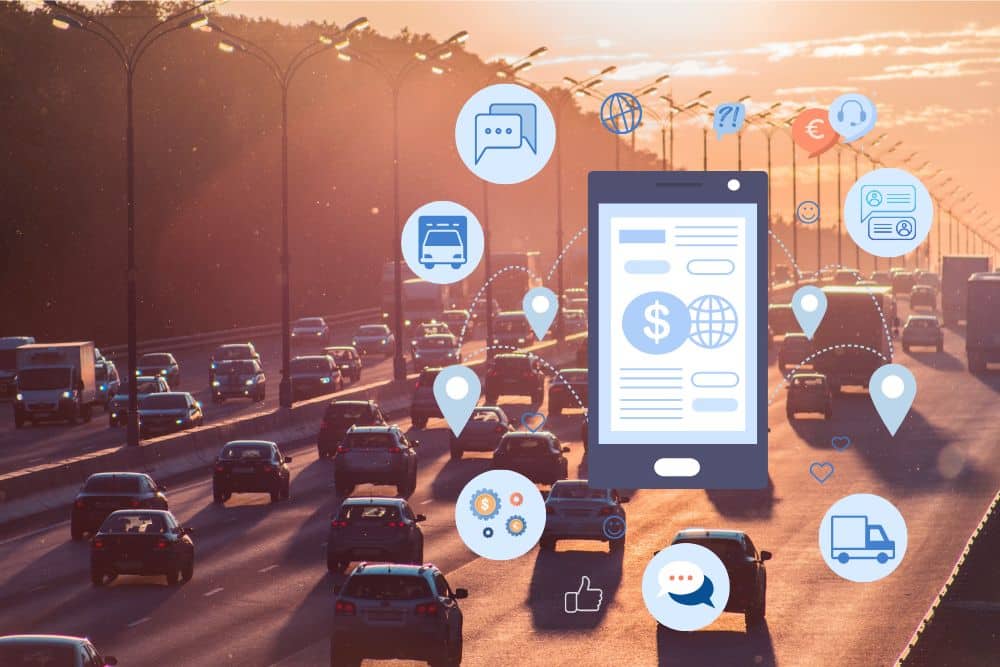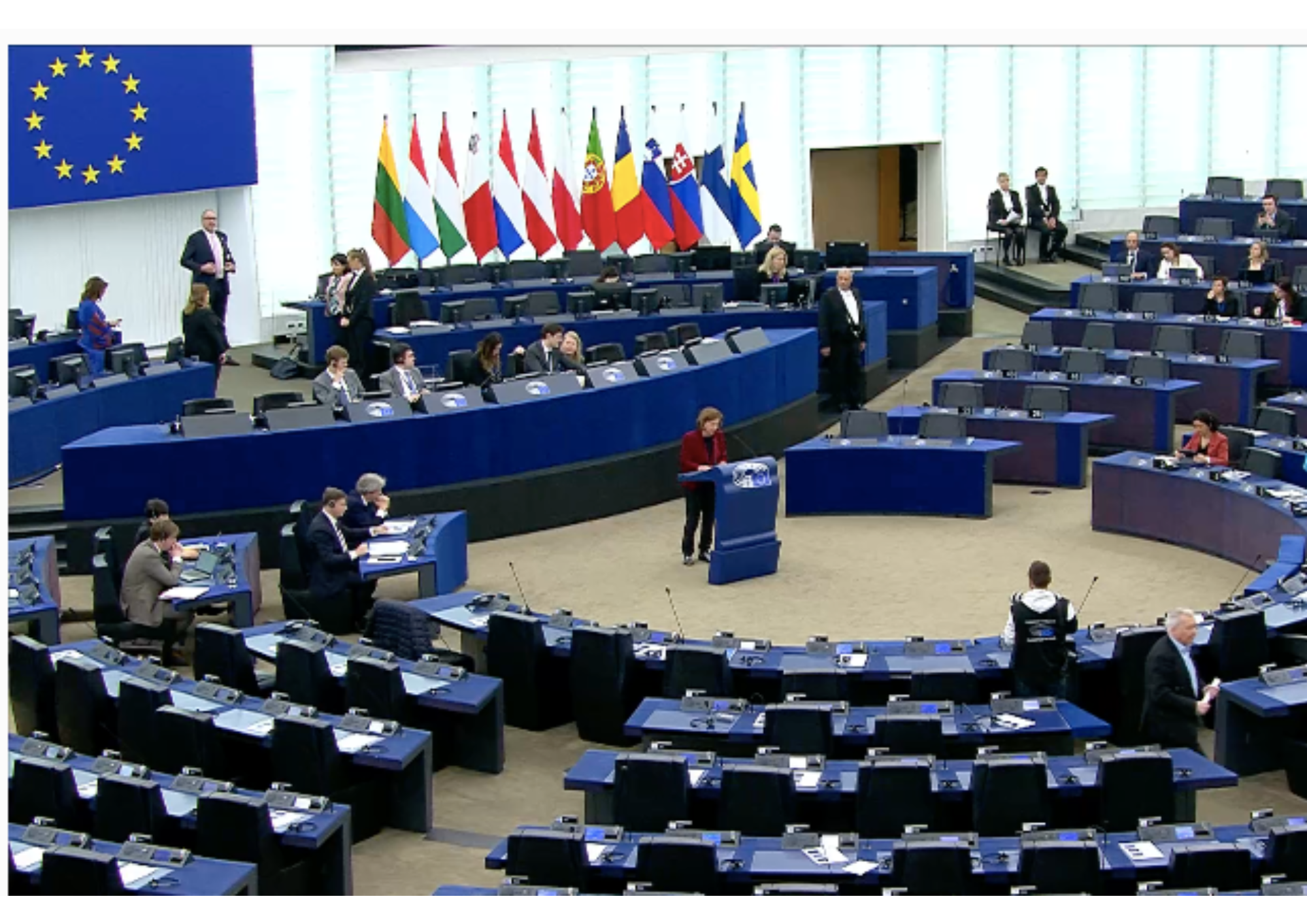Parliament and Council agreed on rules for intelligent transport systems that require more traffic data, such as on speed limits, to be available digitally.
The provisional agreement reached on Thursday on intelligent transport systems (ITS) rules will help digitalise the transport sector and ensure that data between mobility apps will be shared more widely in order to make mobility safer, more efficient and sustainable.
Data sharing
During the negotiations, MEPs supported covering more services, such as multimodal information, booking and ticketing services, communication between cars and infrastructure, and automated mobility.
They managed to include more crucial road and traffic data for online sharing. In addition to speed limits, road closures or roadworks, data on one-way streets in cities, traffic weight, length, width and height restrictions as well as conditions for circulation in regulated traffic zones will be included in a national database to be shared between EU countries, businesses and consumers.
Depending on the type of data, the deadline to make new information available digitally ranges from between the end of 2025 and the end of 2028. This will launch a process to deploy ITS more swiftly.
Basic principles
The deployment of ITS services will have to be technologically neutral, to foster interoperability, not discriminate against vulnerable road users and must ensure transparency of ranking, including on environmental effects, when proposing mobility options to customers.
In order to organise cross-border transport smoothly, EU member states will have to cooperate better when deploying ITS services, in particular on cross-border projects.
Quote
EP rapporteur Rovana Plumb (S&D, RO) said: “The deal will contribute to citizens’ safety on the road, will improve transport networks’ performance and services, whilst fostering connectivity and facilitating cooperation. Parliament secured an ambitious geographical scope and timeline for the data and services provided. By having deadlines for most types of data, we initiate a process that will speed up the deployment of intelligent transport systems and ensure that authorities at all levels start preparing for the new digital environment.”
Next steps
The informal deal still needs to be approved by Parliament’s Transport and Tourism Committee and the Council’s Committee of Permanent Representatives, and then the Parliament and Council as a whole.














 English
English French
French Spanish
Spanish German
German Dutch
Dutch Italian
Italian Danish
Danish Portuguese
Portuguese Greek
Greek Russian
Russian Swedish
Swedish Bulgarian
Bulgarian Hungarian
Hungarian Catalan
Catalan Ukrainian
Ukrainian Polish
Polish Basque
Basque Chinese (Simplified)
Chinese (Simplified) Japanese
Japanese Hebrew
Hebrew Arabic
Arabic Swahili
Swahili Amharic
Amharic Irish
Irish Afrikaans
Afrikaans Albanian
Albanian Armenian
Armenian Azerbaijani
Azerbaijani Belarusian
Belarusian Bengali
Bengali Bosnian
Bosnian Cebuano
Cebuano Chichewa
Chichewa Chinese (Traditional)
Chinese (Traditional) Corsican
Corsican Croatian
Croatian Czech
Czech Esperanto
Esperanto Estonian
Estonian Filipino
Filipino Finnish
Finnish Frisian
Frisian Galician
Galician Georgian
Georgian Gujarati
Gujarati Haitian Creole
Haitian Creole Hausa
Hausa Hawaiian
Hawaiian Hindi
Hindi Hmong
Hmong Icelandic
Icelandic Igbo
Igbo Indonesian
Indonesian Javanese
Javanese Kannada
Kannada Kazakh
Kazakh Khmer
Khmer Korean
Korean Kurdish (Kurmanji)
Kurdish (Kurmanji) Kyrgyz
Kyrgyz Lao
Lao Latin
Latin Latvian
Latvian Lithuanian
Lithuanian Luxembourgish
Luxembourgish Macedonian
Macedonian Malagasy
Malagasy Malay
Malay Malayalam
Malayalam Maltese
Maltese Maori
Maori Marathi
Marathi Mongolian
Mongolian Myanmar (Burmese)
Myanmar (Burmese) Nepali
Nepali Norwegian
Norwegian Pashto
Pashto Persian
Persian Punjabi
Punjabi Romanian
Romanian Samoan
Samoan Scottish Gaelic
Scottish Gaelic Serbian
Serbian Sesotho
Sesotho Shona
Shona Sindhi
Sindhi Sinhala
Sinhala Slovak
Slovak Slovenian
Slovenian Somali
Somali Sundanese
Sundanese Tajik
Tajik Tamil
Tamil Telugu
Telugu Thai
Thai Turkish
Turkish Urdu
Urdu Uzbek
Uzbek Vietnamese
Vietnamese Welsh
Welsh Xhosa
Xhosa Yiddish
Yiddish Yoruba
Yoruba Zulu
Zulu